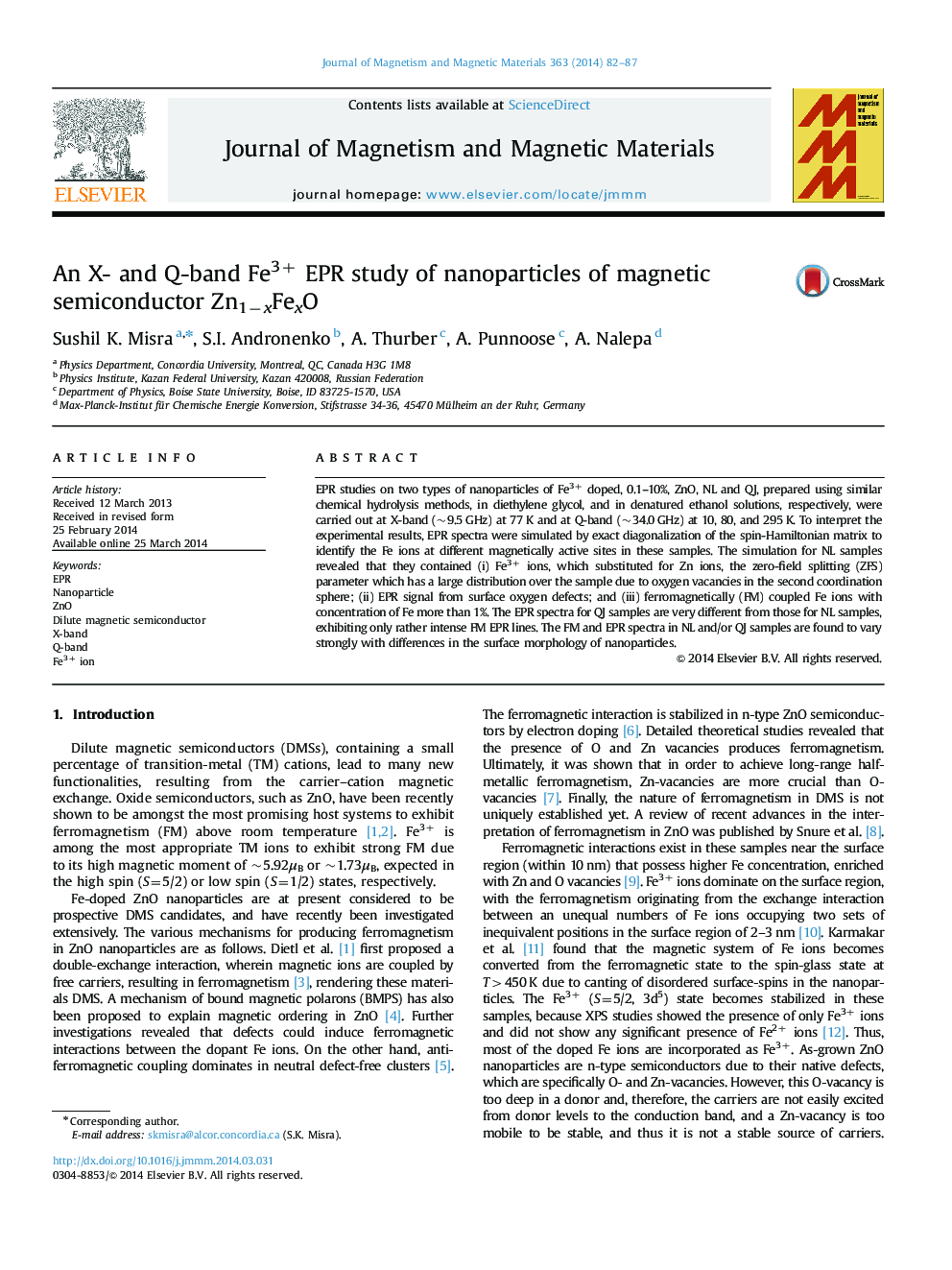| Article ID | Journal | Published Year | Pages | File Type |
|---|---|---|---|---|
| 1799642 | Journal of Magnetism and Magnetic Materials | 2014 | 6 Pages |
•X and Q band EPR studies on NL and QJ nanoparticles of Fe3+ doped ZnO at 10, 80, and 295 K.•Fe ions are present at different magnetically active sites in these samples.•NL samples consist of paramagnetic Fe3+ ions, and ferromagnetically coupled Fe ions.•QJ samples exhibit only intense ferromagnetic lines, different from QJ.•Spectra vary strongly with the surface morphology of nanoparticles.
EPR studies on two types of nanoparticles of Fe3+ doped, 0.1–10%, ZnO, NL and QJ, prepared using similar chemical hydrolysis methods, in diethylene glycol, and in denatured ethanol solutions, respectively, were carried out at X-band (~9.5 GHz) at 77 K and at Q-band (~34.0 GHz) at 10, 80, and 295 K. To interpret the experimental results, EPR spectra were simulated by exact diagonalization of the spin-Hamiltonian matrix to identify the Fe ions at different magnetically active sites in these samples. The simulation for NL samples revealed that they contained (i) Fe3+ ions, which substituted for Zn ions, the zero-field splitting (ZFS) parameter which has a large distribution over the sample due to oxygen vacancies in the second coordination sphere; (ii) EPR signal from surface oxygen defects; and (iii) ferromagnetically (FM) coupled Fe ions with concentration of Fe more than 1%. The EPR spectra for QJ samples are very different from those for NL samples, exhibiting only rather intense FM EPR lines. The FM and EPR spectra in NL and/or QJ samples are found to vary strongly with differences in the surface morphology of nanoparticles.
